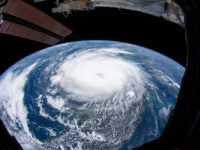The chaos of Earth’s climate has led some to doubt the validity of anthropogenic (human-caused) climate change currently affecting the planet. Climate deniers commonly respond to scientific evidence of global warming with statements along the lines of “hasn’t the climate always been changing?” While it is true that Earth’s climate has often fluctuated throughout planetary history, Stephanie Herring, a climate scientist for the National Oceanic and Atmospheric Administration (NOAA), states that scientists are primarily concerned that changes associated with the recent warming trend are occurring faster than at any other time in the history of human civilization. However, because of the unpredictability of Earth’s conditions, climate scientists struggle to assess the full impact of climate change. How can scientists predict the causes and effects of modern climate change when the climate itself is so chaotic?
How can scientists predict the causes and effects of modern climate change when the climate itself is so chaotic?
One possible route of study is through physics. A study in Reviews of Modern Physics, led by Valerio Lucarini and Michael Ghil, proposes to address the gap in current climate predictions by using physics-based models to mathematically evaluate the interplay between normal climate variation, human effects, and natural influences. According to the authors, current climate change models face two main flaws. The first flaw is that models have limited specificity regarding the mean global temperature after the concentration of carbon dioxide in the atmosphere doubles. Current predictions compute an increase between 1.5 and 6 degrees Celsius despite more than 40 years of modelling. Secondly, models typically struggle to predict the point at which a system is irreversibly changed, also known as a tipping point. These areas are key factors in evaluating the impact of anthropogenic climate change, thus finding the source of these flaws is critical.
Experts believe that the flaws present in current climate models stem from the failure of mathematical models to reproduce the elements of chaos theory that are present in climate systems. Chaos theory is a well-studied mathematical concept which describes the large impact of one relatively small action on the outcome of a system. The basis for the theory was formed in 1961 by a meteorologist named Edward Lorenz, who used early computers to attempt to predict the weather. He found that if he ran the weather model using a value containing three decimal places, such as 0.506, he produced a wildly different prediction than if he ran the model using a value containing six decimal places, such as 0.506127. This led to the discovery that tiny measurement errors grew to the extent that they impacted the eventual prediction significantly. However, the differences between models due to the erroneous measurement is deterministic, meaning the chaos can be predicted, which allows scientists to incorporate the “randomness” into their models. The combination of natural elements such as cloud formations, ocean currents, wind patterns, and solar radiation creates a complex and chaotic climate system on Earth. Lucarini and Ghil posit that scientists’ ability to predict the deterministic elements of this system plays a critical role in developing accurate climate change models.
Ideally, this framework can help advance an interdisciplinary approach to evaluating the impacts of climate change and encourage climate scientists to incorporate mathematical principles into their models to improve their predictions.
Subsequently, Lucarini and Ghil developed a model that provides the tools to more easily incorporate the principles of chaos theory into climate change predictions. The framework may help climate scientists increase the accuracy of models by improving the evaluations of how human emissions of carbon dioxide disrupt the natural variability of the climate. Lucarini and Ghil’s model also helps scientists determine the amount of detail necessary to produce accurate models. Ideally, this framework can help advance an interdisciplinary approach to evaluating the impacts of climate change and encourage climate scientists to incorporate mathematical principles into their models to improve their predictions.
While climate deniers may try to argue otherwise, human activities are causing increased global temperatures compared to natural fluctuations in climate. Scientists are constantly working to optimize models that predict the impact of global warming. As the world becomes increasingly affected by climate change, physics may be the answer to accurately evaluating what chaotic future lies ahead.
Image Source: Pixabay






